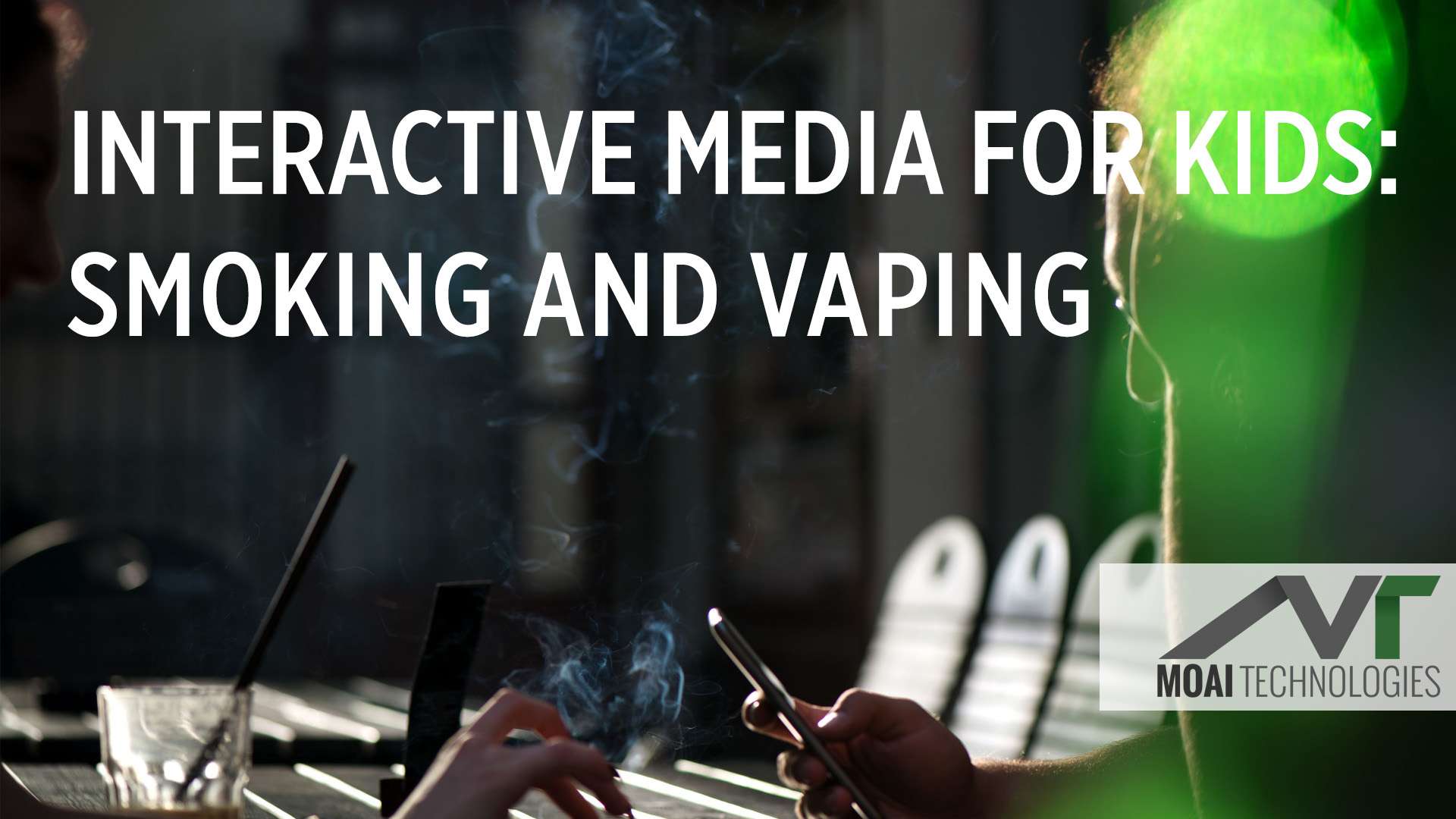Interactive Digital Media to Support Children’s Learning about Tobacco and the Human Body — Phase II

Project Website(s)
-
Project Description
MOAI Technologies of Minneapolis, MN is in the process of developing a Phase II health product, having successfully completed a Phase I prototype. The purpose of the product is to provide U.S. middle schools with a tool to greatly improve their health education materials for covering smoking and other types of nicotine use. Such materials have been published for many years, but the vast majority of them are in print form. Students, on the other hand, are increasingly using technology for learning and have come to expect a more up to date production value. This product is an online interactive learning game suite.
Another part of the improvement process is producing content for the relatively recent phenomenon of vaping. Whereas cigarette smoking in youth has decreased in recent years, the use of e-cigarettes has taken over satisfying the adolescent demand for nicotine products in the past 3–5 years. Material on vaping has not kept up with this trend and will thus be an important aspect of the product’s development.
The product will contain in-depth information on the following topics relating to smoking and vaping:
- The role of nicotine in addiction.
- How nicotine use affects the brain.
- Various types of tobacco/nicotine products, especially those associated with smoking and vaping.
- The chemical contents of commercial tobacco/nicotine products.
- Damage to body organs and diseases caused by smoking and vaping.
- Statistics and the use and effect of smoking and vaping products.
- The marketing of smoking and vaping products.
Research reported in this publication was supported by the National Institute of General Medical Sciences of the National Institutes of Health under Award Number R44GM130155. The content is solely the responsibility of the authors and does not necessarily represent the official views of the National Institutes of Health.
-
Abstract
This SBIR Phase II project will develop an innovative STEM online game that combines biology education about parts of the human body while also teaching about the bad health effects on the body of smoking and other tobacco use. The target audience is students in grades 5–8, which lines up with health curriculum coverage of these topics in most states. The entertaining and challenging aspects of the game will keep the attention of the student much longer than current methods, such as reading print materials or viewing a DVD video.
The Phase II work will a) expand the scope and enhance the quality of the prototype version that received positive teacher and student reaction in Phase I trials, b) expand the evaluation research in methods and student population, and c) establish a workable commercialization plan for the game product in the K–12 education market.
The game is a free navigation application taking place in an old castle in which the student searches for objects that will allow him/her to rescue a character imprisoned by tobacco enemies. In the process the player encounters information about tobacco use and its health consequences for the human body, often requiring a demonstration of learning by the student to proceed successfully. A guide will assist the player when needed. Health issue content, displayed in on-screen text or video clips, includes information on cancer, oral cancer, heart disease, lung disease, gum disease, and nicotine addiction, and the human organs affected by these diseases. Challenges consist of finding hidden objects, collecting information to apply to answering biological health questions, selecting messages for an anti-tobacco ad campaign, and other game-like activities. When a challenge is successfully completed, the player receives resources that will help him defeat the dangerous cigarettes, e-cigs, cigars, and chewing tobacco containers roaming the castle rooms and halls. The game is designed to be appealing to both boys and girls. It will be evaluated in six elementary and middle schools, chosen to represent a sampling of urban and rural schools and racial and ethnic diversity. User testing, with both students and teachers, will be conducted to evaluate the usability, feasibility, and effectiveness of the game.
PUBLIC HEALTH RELEVANCE: In 2012, five percent of eighth grade students reported having had their first cigarette by the end of fifth grade (ages 10 to 11). If current trends continue, 5.6 million children under the age of 18 who are alive today will ultimately die from smoking-related diseases.
-
Dissemination Strategies
Dissemination will take place via the Internet.
Project Audience
Middle School Students (Grades 6–8)
Subjects Addressed
Nicotine, tobacco, vaping, addiction, chemicals in tobacco products, damage to body organs, marketing of tobacco products







